Efforts to restore native Arctic grayling to the Missouri River headwaters within Yellowstone National Park are moving forward, but progress is slow and being accomplished in increments, according to Dr. Todd Koel, the lead fisheries biologist at Yellowstone National Park.
“The park has attempted to restore grayling for years,” Koel said during a recent interview. “The first attempts date all the way back to the 1970s.”
But native grayling, once abundant in the Gibbon, Firehole, Madison and Gallatin rivers (below Firehole and Gibbon falls), have been functionally extinct in the park dating back to the 1930s. A few isolated lakes in the upper Gibbon drainage (Wolf and Grebe lakes) and Cascade Lake in the Yellowstone drainage have held adfluvial (lake-dwelling) grayling for decades, but not the strain of fish native to the park. The native grayling are fluvial fish that moved between lakes and rivers and swam alongside native westslope cutthroat trout (which are also being restored to park waters under the park’s Native Fish Conservation Plan).
Koel and his team of biologists have worked for years to reintroduce grayling into a handful of locations where survival is most likely, including into the upper Gibbon River above Virginia Cascades and in Grayling Creek in the park’s northwest corner. In Grayling Creek, biologists have been introducing eyed eggs (fertilized eggs that are developed enough to show the embryo’s eyes and are nearly ready to hatch) in incubator boxes in the extreme upper reaches of Grayling Creek since 2015.
“When we bring them in there, the water is still so cold — it’s still winter, really,” he said. The location is some 15 miles into the backcountry, in the very top of the grayling creek drainage, and the eggs, reared by the Yellowstone River Trout Hatchery, are close to hatching when they arrive in the park in May. But, because the water is so cold and bursting with snowmelt, the hatching process slows to a crawl within the incubator boxes in Grayling Creek. The eggs eventually hatch, but much later than they would have under the conditions in which they were raised in Big Timber.
In 2017, when the park’s fish-stocking crew dropped into the headwaters of Grayling Creek with the eyed eggs, there was so much snow that they couldn't even identify where the creek flowed.
“It was basically just a giant snow field,” Koel said. “So, that year, we had to wait until the creek opened up before we could put the eggs in, and by that time, the eggs had already hatched. So we ended up stocking fry that spring.”
Grayling Creek eventually flows into the Hebgen Reservoir, and there is a fish barrier on Grayling Creek (a park-enhanced natural waterfall) that prohibits non-native browns and rainbows from migrating up the creek from the lake, where they could prey on young grayling. But there’s nothing stopping grayling from moving downstream—in fact, Koel said, some grayling are turning up in catching reports in Grayling Arm of the reservoir, and one angler even reported catching a grayling in the Madison River below Hebgen Dam.
“It seems that the grayling are doing what grayling do,” Koel said. “They like big, open habitat. They move around a lot. They travel.”
And, Koel notes, if grayling had their way, they’d likely occupy the lower reaches of Grayling Creek and move into the bottomland estuaries of Hebgen Reservoir, like the lower Madison, and Cougar Creek. As the National Park Service continues to plant grayling the headwaters of Grayling Creek, Koel noted that it’s not completely out of the question that more and more mature fish will turn up in the reservoir and in the rivers and streams as they flow into the reservoir.
“Historically, lower Grayling Creek had an abundant population of grayling,” Koel said. “They’re not likely going to be terribly abundant in the upper reaches of the creek.”
But, Koel said, it’s important that the grayling have that refuge, away from the non-native fish, where they can spawn in the spring. The hope is that, by introducing eyed eggs rather than fry, the fish will imprint on Grayling Creek and continue to spawn there.
So far, there’s no data indicating that the reintroduced grayling have spawned in Grayling Creek, but there is a suspicion that they have. Koel and his team are waiting on some results from the DNA testing of some very small fry found last year in the creek—the fish were so small that biologists couldn’t tell if they were grayling or west slope cutthroat trout.
“We’re hopeful that they were grayling,” Koel said. “But we’re going to keep putting eggs in, regardless.”
Grayling Creek isn’t the only place where the Park Service is trying to bring back native grayling. Since 2017, Koel and his team have been working to make the upper Gibbon River a grayling stronghold. The Park Service has treated both Wolf and Grebe lakes with piscicide and reintroduced more than 140,000 grayling fry and fingerlings in the lakes and their tributaries over the last two years. Prior to the treatment, the lakes held non-native rainbows and an adfluvial strain of grayling that wasn’t native to the park.

Biologists have also treated the entire reach of the Gibbon River between the two lakes and Virginia Cascades (which is located just south of the Norris-to-Canyon Road) on the Gibbon. The last two years, the Park Service has focused on treating the river between Lower Gibbon Falls and Virginia Cascades — this stretch of river has long been a favorite road-side fishery for introduced brook trout, but Koel and his team hope to make it a native fishery for both grayling and reintroduced west slope cutthroat trout.
“We have one more treatment planned this year for that stretch, and we’ll hopefully get the last of the brook trout out of there. Then I think we’ll be ready for the reintroduction,” Koel said. “Right now, any grayling in that stretch is only a year or two old, but we think we’re on our way, and there could be a ton of grayling in there again.”
The grayling in Yellowstone evolved alongside westslope cutthroat trout, which are being introduced alongside their salmonid cousins. Koel noted that the cutthroats, now without any non-native competitors, are actually doing quite well in both the Gibbon River above Little Gibbon Falls and in the more challenging environment of Grayling Creek.
“Under our original scoping, restoring west slope cutthroats was our primary goal, and I think we’re on our way to achieving that goal,” Koel said. But, he noted, “It is called Grayling Creek for a reason. We’re going to keep trying.”





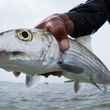




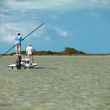




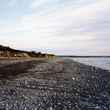




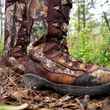
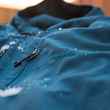



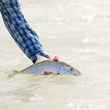
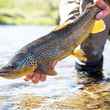



Comments
Gray Ling replied on Permalink
Grayling that inhabit lakes are not adfluvial. Adfluvial requires movement between a riverine system and a lacustrine system, typically so they can rear in the lake. Fluvial grayling do not move between lakes they and rivers. They rear in a larger River or stream and spawn in tributaries. Your article mislabels adfluvial grayling as fluvial and resident/lacustrine grayling as adfluvial.
Chris replied on Permalink
Adfluvial fish spawn in rivers and streams but mature in lakes and spend most of their time there. Fluvial fish tend to migrate between lakes and rivers, as per the National Park Service.
Kenneth B Lane replied on Permalink
Grand fish and grand efforts, thanks to all involved.
Mark Zemke replied on Permalink
My thanks to Dr. Koel and his team as they continue to reintroduce Arctic grayling and westslope cutties to the majestic Yellowstone National Park … hoping your efforts are very successful and much appreciated by all but especially by my fellow fly fishers …
Thomas L Williams replied on Permalink
It is unfortunate that the reindroduction of fish species that were once native to rivers are causing the sacrafice of other trout species that have been introduced so long ago that I beleive they should be considered native by now.
Who wants to catch a cutthroat when they could be catching a rainbow. Not me.
Anonymous replied on Permalink
Then go to where the rainbows are and stay out of Yellowstone please.
John E Wood replied on Permalink
Thomas, that's an interesting perspective, and one to be considered where rainbow trout populations have been established in waters which had historically been devoid of fish. A perspective I have pondered repeatedly since 2004, when California halted rainbow trout stocking in a number of creeks where (I can't remember the exact species) frogs thought to be extinct were discovered. However, in the case of displaced native fish populations, it’s a perspective not widely shared, for good reason.
In the case of restoring native fish to waters where previous human intervention has decimated the native populations, restoring native populations should be of paramount importance. In this case, Dr Koel’s team is merely undoing a series of bad decisions that started in 1889, when park employees began stocking non-native rainbows in the park to meet the fishing and harvest demands of park visitors. Collectively, we as humans have made some bad decisions, which have had devastating affects on our native fish populations, not only in YNP but worldwide. The only responsible course for us, especially as anglers, is to give full support to any native fish restoration project, especially when those efforts show as much success as the efforts to restore native fish populations in Yellowstone National Park by Dr Koel’s team. The native restoration efforts are not park wide as it is not feasible in many of the waters within YNP. The majority of waters in YNP are under Native Trout Conservation regulations which allow for the harvest of, still thriving, non-native, rainbow, brown and brook trout populations.
Look at a fishing regulation map of YNP, and you will find that regulations for non-native trout species, ranges from unlimited non-native trout harvest, to catch and release only for rainbow and brown trout. In an interview with Dr Koel several weeks ago, he was adamant that rainbow and brown trout will remain the dominant fish species in the Madison River, Firehole River and Lower Gibbon Creek. He further explained that, even if the NPS wanted to remove non-native fish in those rivers, the task would be, at the very best, extremely prohibitive in cost and effort.
Rest assured your precious rainbow trout will always be a part of the angling experience in YNP.
Pages